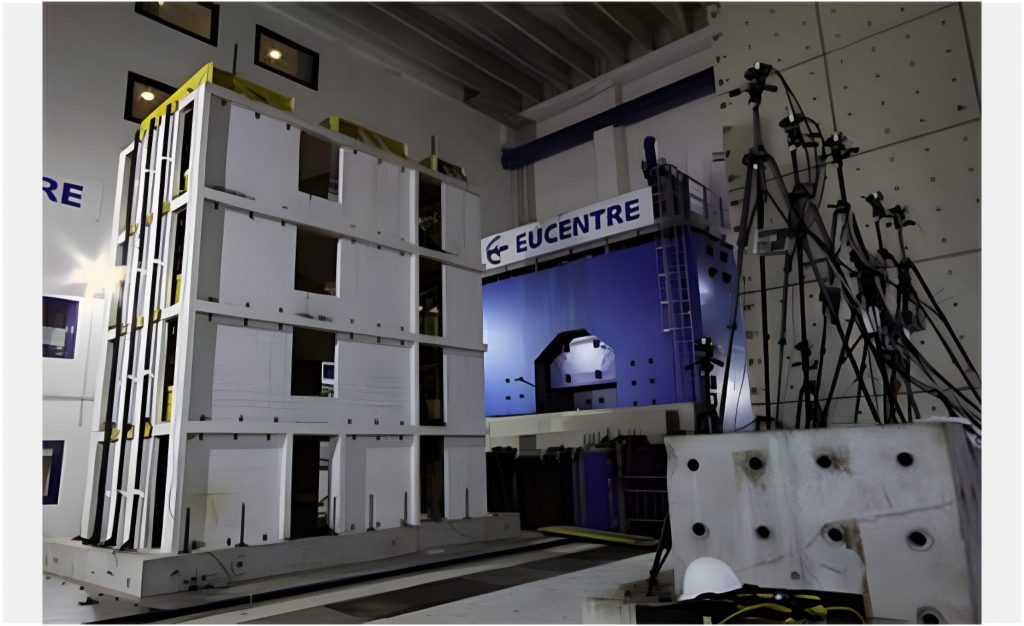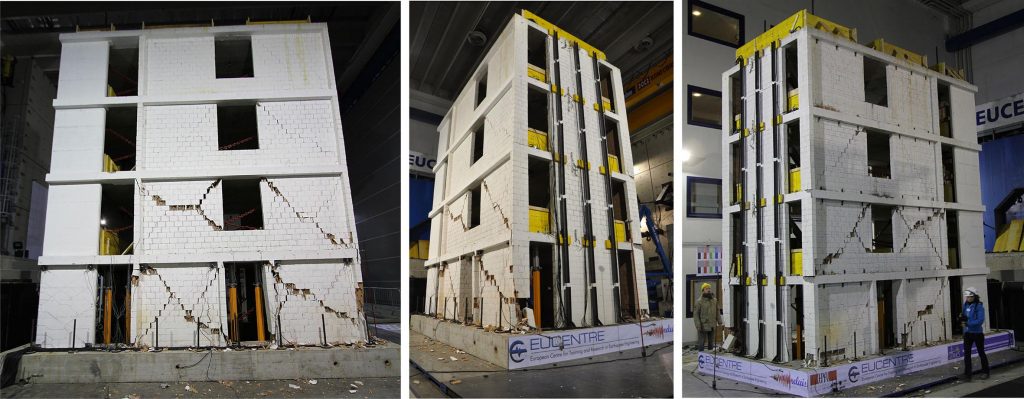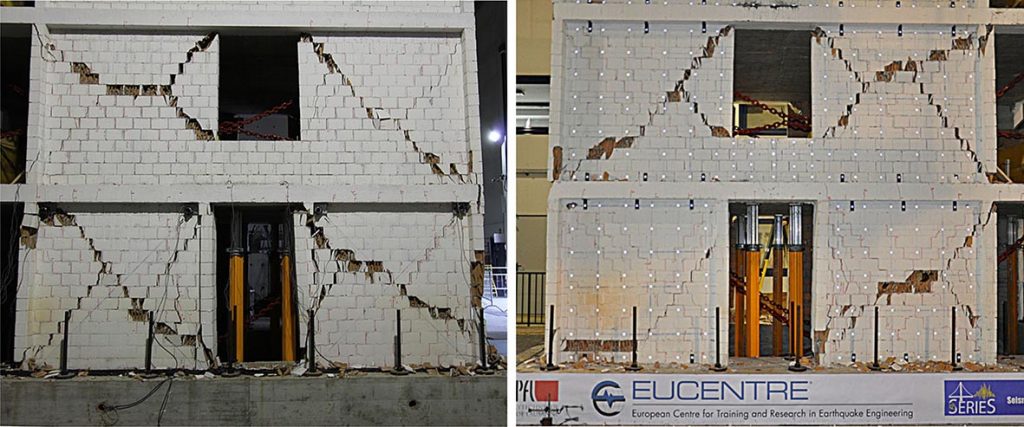The CoMa WallS project has the objective of investigating the seismic behaviour of building systems with reinforced concrete (RC) and unreinforced masonry (URM) walls by means of shaking table tests. The behaviour of such structures is strongly dependent on both types of structural elements (RC and URM walls) since the stiffness and strength of the walls is comparable. The aim of the project was not only to investigate the in-plane behaviour of the mixed structure (performance limits, distribution of forces in the system, stiffness and damping degradation) but also the out-of-plane behaviour of URM walls subjected to different boundary conditions.
The test unit was a four storey structure built at half-scale, which was tested on the uni-directional shake table at the Eucentre TREES Lab (Pavia, Italy); the overall dimensions of the structure were 5.6 x 3.2 x 6.2 m (LxWxH). The structure, which represented a modern engineered residential building with RC slabs, was composed of two RC walls and six URM walls; four of the latter were loaded in-plane and two out-of-plane.

Nine tests were performed with increasing values of peak acceleration ranging from 0.05 g to 0.9 g. The acquired data have been post-processed and made publically available. With the last test the structure came close to collapse as the four in-plane-loaded URM walls of the first and second floor lost their axial load bearing capacity resulting in a significant level of residual displacements; masonry spandrels at all storeys remained instead uncracked. The RC walls underwent only low ductility demands: Up to a PGA of 0.7 g their behaviour was largely elastic; after the last test with PGA 0.9 g residual cracks widths of around 1 mm where observed indicating that the longitudinal reinforcement had yielded. During the last test a severe out-of plane deformation of one of the two URM walls of the fourth floor was observed.


- Article:
- Influence of boundary conditions on the out-of-plane response of brick masonry walls in buildings with RC slabs [journal link]
- Modeling the seismic response of modern URM buildings retrofitted by adding RC walls [journal link]
- Dynamic testing of a four-storey building with reinforced concrete and unreinforced masonry walls: prediction, test results and data set [journal link]
- Dataset: [dataset link]
- Acknowledgment:
- European Community’s Seventh Framework Programme [FP7/2007-2013]––Transnational Access Use of Experimental Facilities (grant agreement no 227887)
- Federal Office for the Environment (OFEV)
- Morandi Frères SA
- CoMa-WallS Team:
- EESD (lead): Katrin Beyer, Marco Tondelli, Sarah Petry, Alessandro Paparo
- Prof. Baris Binici (METU, Turkey)
- Dr. Christoph Butenweg (RWTH Aachen, Germany)
- Prof. M. Altug Erberik (METU, Turkey)
- Dr. Pierino Lestuzzi (IMAC, EPFL)
- Dr. Jenö Varga (Keller Ziegeleien, Switzerland)
- Dr. Thomas Wenk (Wenk Engineering, Switzerland)